In fact achievable clock rates
The actual achievable clock is subject to some influences. Even if GPU quality plays a bigger role here – unfortunately it cannot be influenced as the only element. And so, in the end, it is quite possible that a nominally slower card from a manufacturer A is faster than the card of manufacturer B, in which the customer has pulled a kind of riyinininth in the GPU lotto. Thus, comparisons between the models are always provided with a slight taste of the unpredictable.
However, what is always in the hands of the manufacturers are the specifications and circumstances with which Boost still works, and then ultimately to set itself to cycle rates depending on the situation. In addition to specifications such as the Power Target or a clock offset, it is above all the temperatures achieved in operation that determine performance.
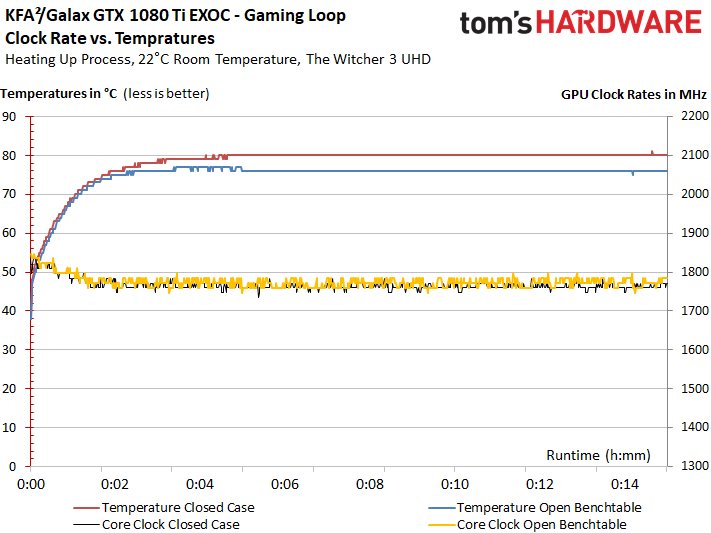
While with the KFA2 / Galax GTX 1080 Ti EXOC you can still record up to 1845 MHz boost clock in the cold state with the KFA2 / Galax GTX 1080 Ti EXOC, in the warmed-up state it is still up to 1772 MHz as an average over a long run of 30 minutes in the closed housing. This is below average, but it fits the target group orientation of the map and its cooling performance.
With the Torture Loop, the limitation then applies much more restrictively, which manifests itself in lower clock rates and thus also lower temperatures (power limit).
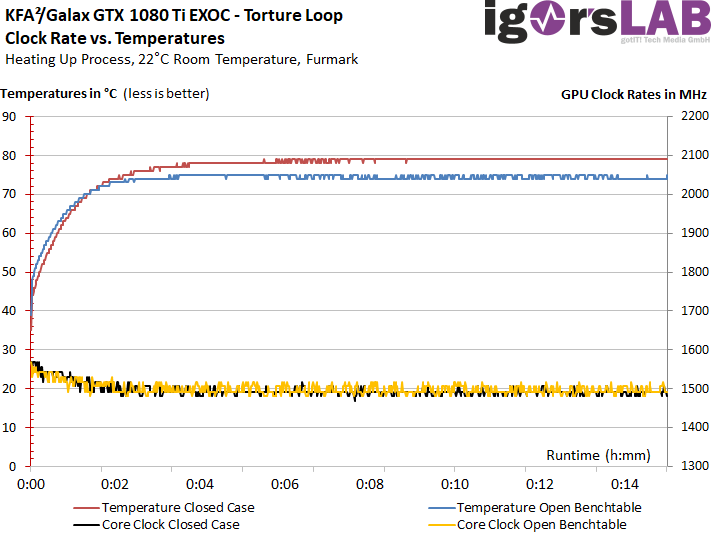
Overclocking attempts
Of course, the card also tolerates various overclocking tests, which ended with air cooling in stable 1845 MHz. For the maximum, however, we had to fix the fan control to 70%. As a result, of course, it will also become much louder. What you should definitely do for overclocking is to increase the power target to the possible maximum or at least 110%. Below we show the results we achieved with our map and the MSI Afterburner Extreme after a long warm-up and testing time in Witcher 3:
| Clock Raising |
Power Target Afterburner |
Average. Boost clock |
Average. Voltage |
Performance Recording |
Note |
|---|---|---|---|---|---|
| No | 100% | 1772 MHz | 0.975 V | 252.1 W | Original |
| No | 116% | 1845 MHz | 1,012 V | 287.3 W | Long-term stable |
| +70 MHz | 116% | 1911 MHz | 1.031 V | 292.1 W | Crash after a few minutes |
When it comes to memory, you have to have luck and, above all, stamina, because not everything that seems stable is, it is in the long run. With suitable games (e.g. Witcher 3 or Metro LL) can be found out quite well over a longer period of time. The 350 to 400 MHz input to the already somewhat overclocked memory were still in it, but then the performance decreased again slightly – up to the crash.
Infrared analysis of board temperatures
We decided not to pierce the backplate, but to determine the profit of cooling performance through the pads. If the existing openings are used as reference points, the voltage converters have a temperature of up to 3 Kelvin lower, but with the GPU it is only one Kelvin at most, i.e. within the measuring tolerances. However, since the actual hotspot is not covered with pad, we have removed the backplate for the infrared measurements.
Despite the standing fan, there are no hotspots to be seen in the Idle, which clearly speaks for the chosen VRM heatsink solution.
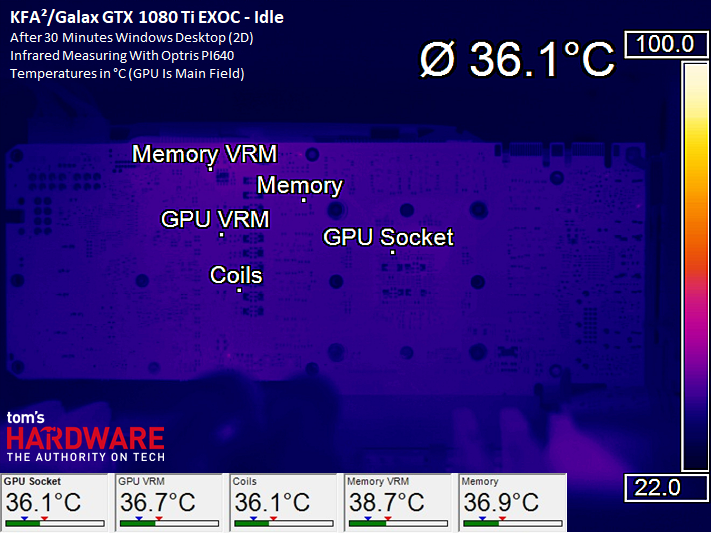
We measure 77 to 78°C on the open GPU diode, while the board below the GPU package is in exactly the same range at 77°C. The other temperatures can still be seen when talking about a simple dual-slot design.
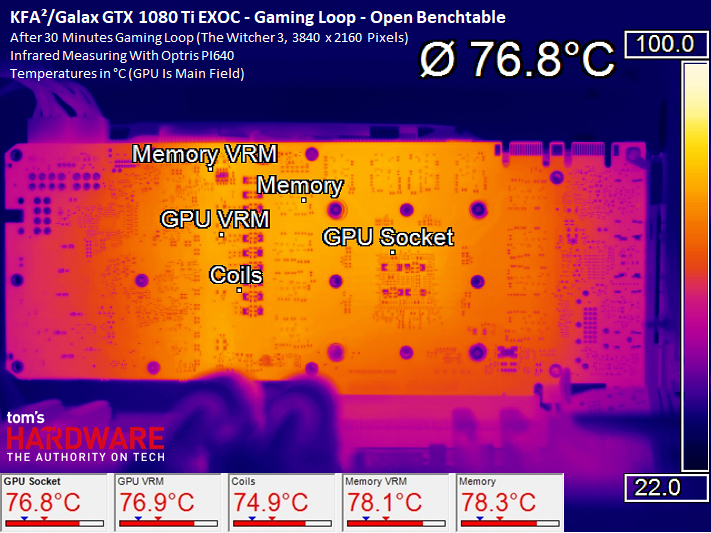
In the closed housing, the GPU temperature rises to 80°C and the base is also at the same level.
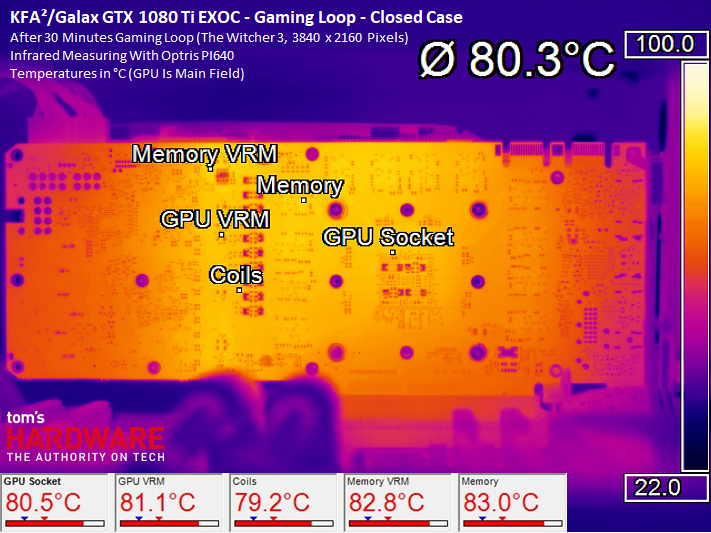
During the stress test, the map even stays a tick cooler, because the flowing currents are more restrictively limited. Only the memory is visibly higher loaded. 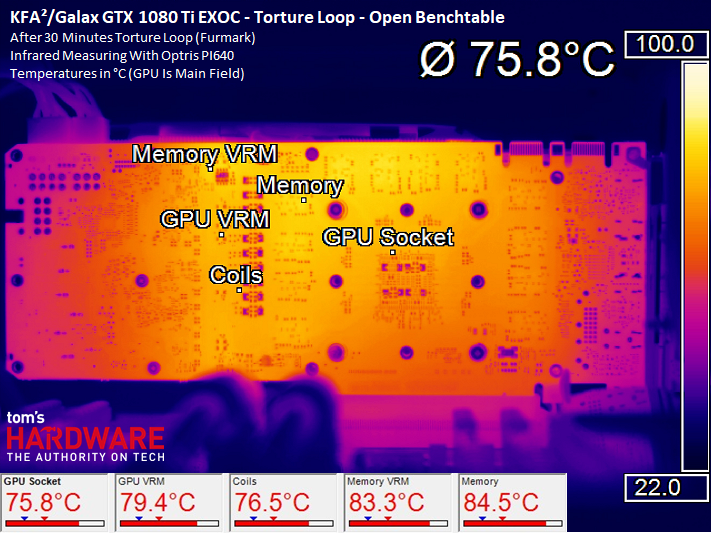
During the stress test in the closed housing, the hottest area is then in the area of the upper memory modules. However, the measured 90°C is still fully within the limits of what can be considered reasonably acceptable even with long-term use.
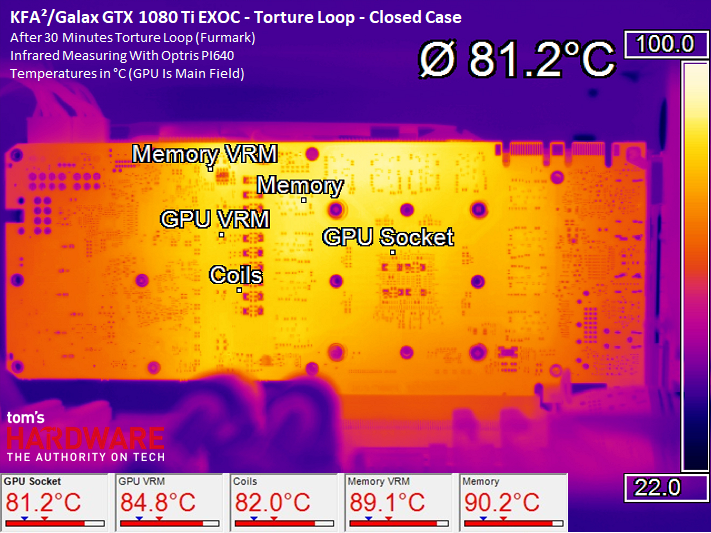
From this point of view, the cooler hardly affords any weaknesses, but also does not offer really large reserves for manual overclocking in areas above 1900 MHz. You have to know this if you are interested in this card. You can't break records, but maybe you don't want to.

































Kommentieren